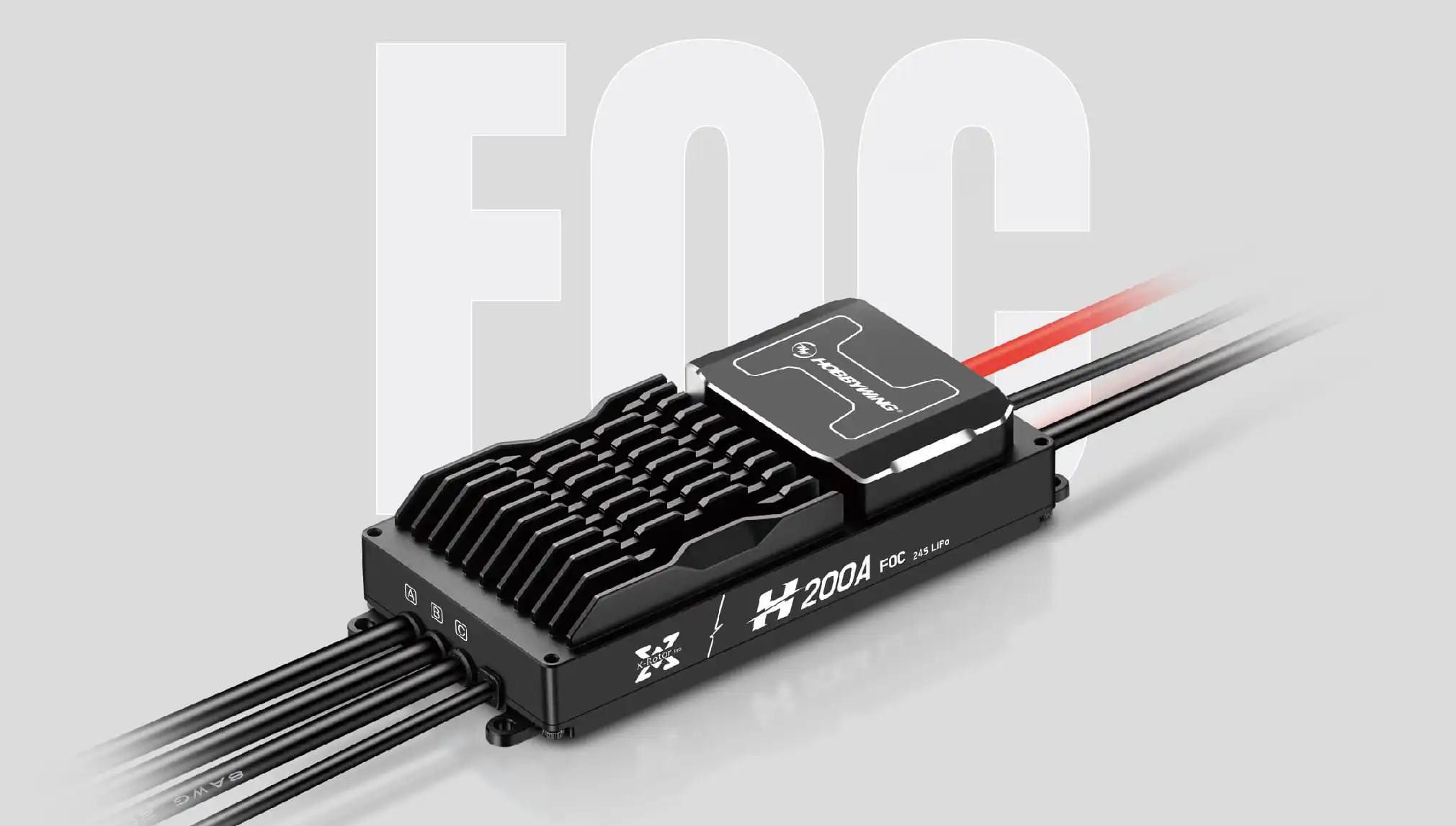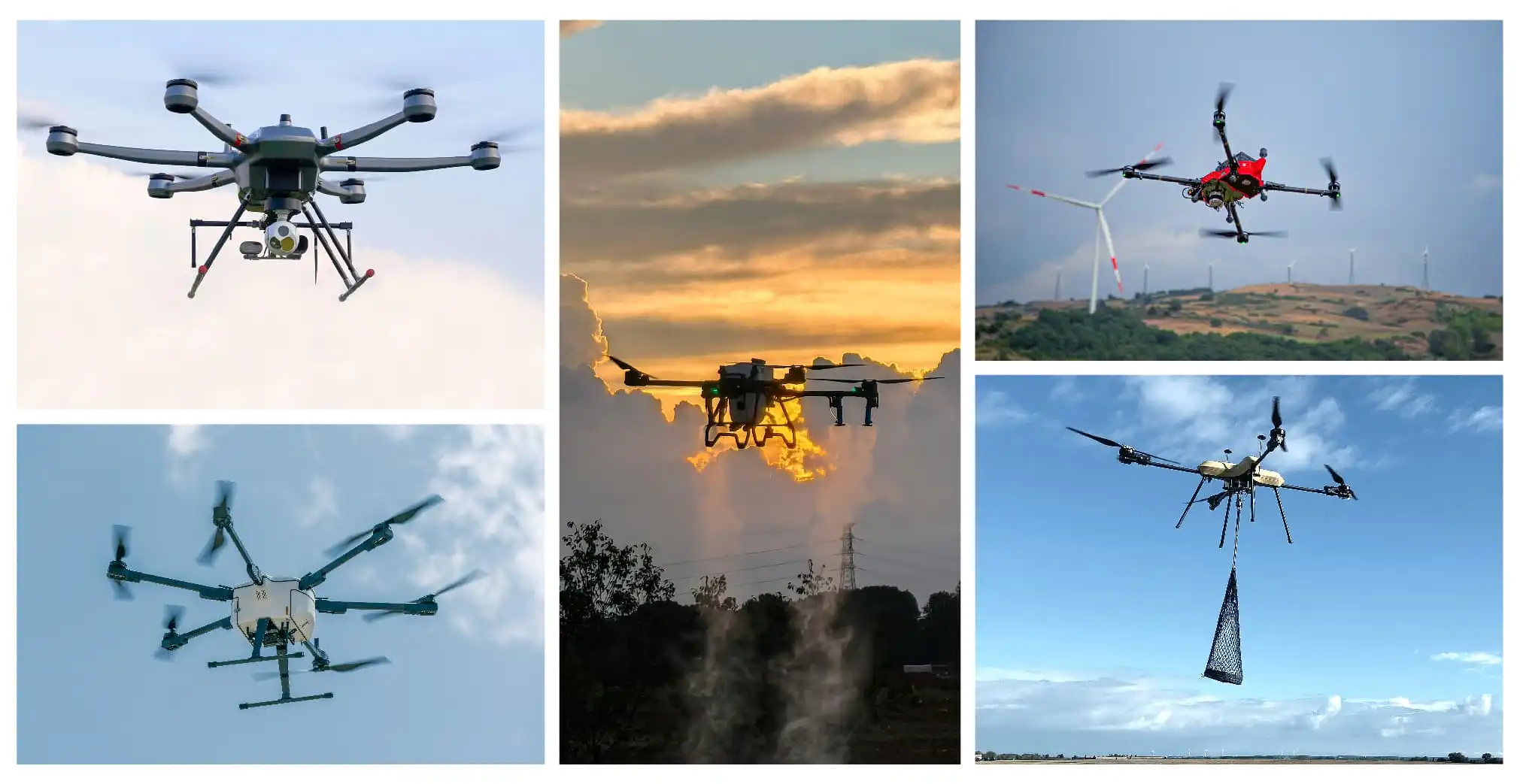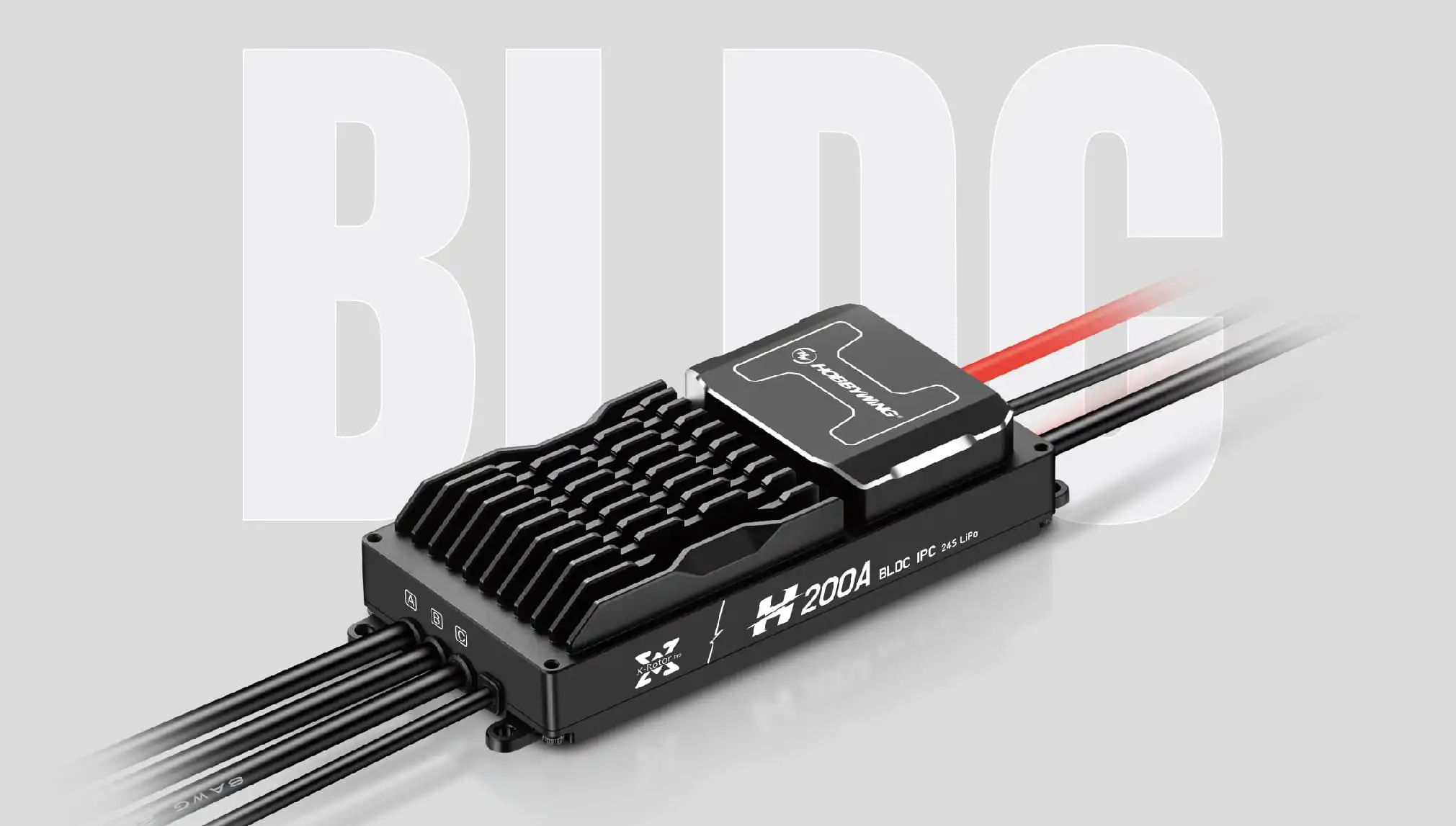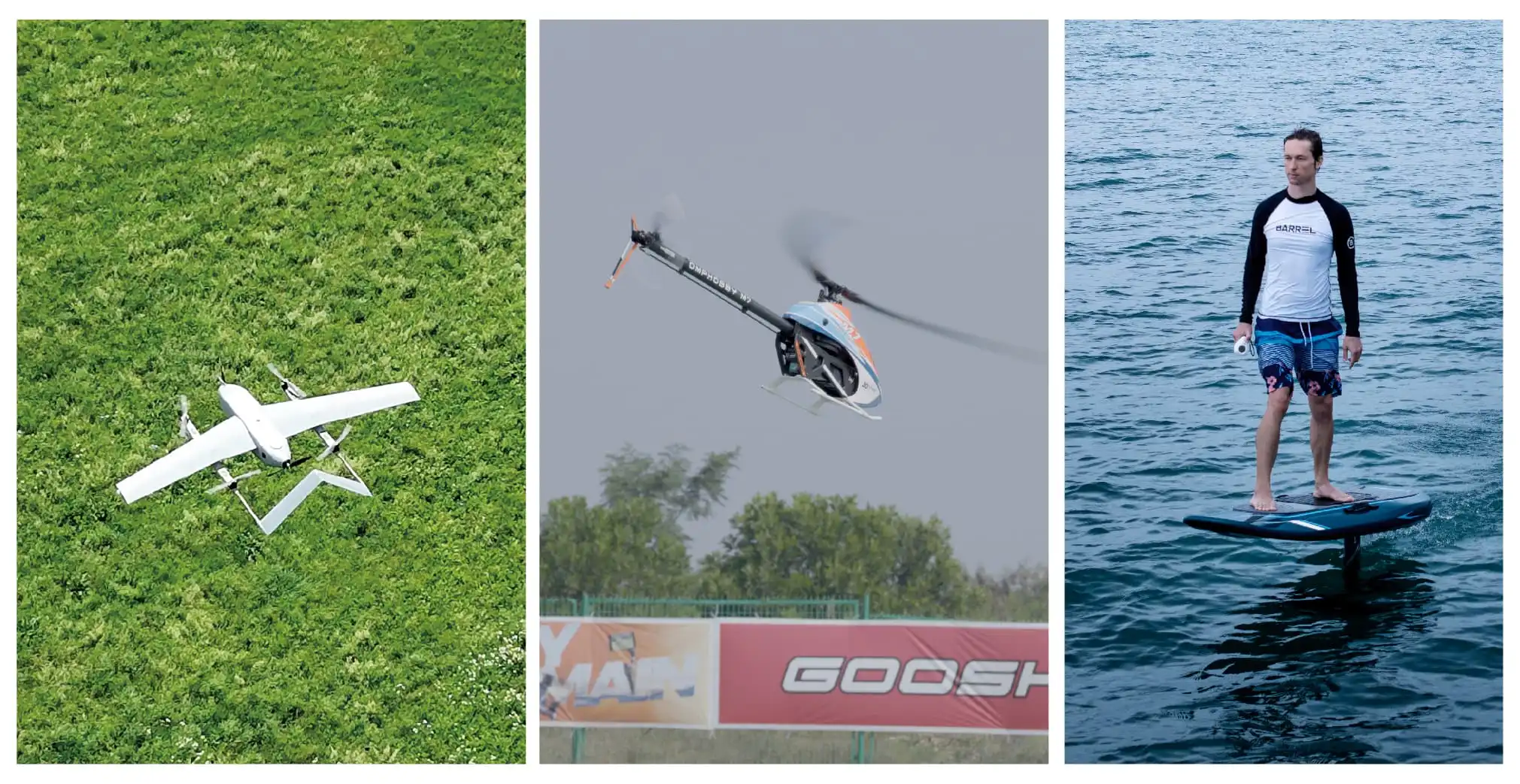























Source : HOBBYWINGDate : 15th Oct 2025
In industrial drone applications, the Electronic Speed Controller (Drone ESC) — the core of the propulsion system — directly affects flight stability, efficiency, and reliability. FOC and BLDC represent two major control technologies in drone ESCs, each with its own advantages and applications.
FOC (Field Oriented Control) is an advanced vector control algorithm that enables high-quality sinusoidal wave drive. Its key advantages include:

1. Provides accurate torque and precise speed control with linear, smooth throttle response, ideal for drone operations requiring fine attitude adjustments or stable hovering.
2. Delivers fast dynamic response, reacting in real time to sudden load changes. This enhances flight stability and anti-interference performance.
3. By precisely controlling the magnetic field direction, it reduces current loss and improves motor operating efficiency.
4. Smooth current output minimizes torque ripple, vibration, and noise, providing pilots and operators with a better operating experience.
In applications demanding exceptional smoothness and efficiency, such as surveying & mapping, aerial filming, scientific research, agricultural crop protection, and logistics — HOBBYWING FOC ESCs deliver superior power performance.

Originally referring to Brushless DC Motors, BLDC now often denotes square-wave control. ESCs using sensorless square-wave drive offer excellent motor compatibility.

- Highly adaptable to various motor types.
- Provides instant high thrust with direct power response, especially for high-KV motors.
- Mature technology makes it a highly cost-effective solution.
HOBBYWING BLDC ESCs incorporate Smart Timing and Synchronous Freewheeling technologies, optimized for high-KV motors to maintain stable operation without complex tuning. They are widely used in drones, RC aircraft, underwater thrusters and efoils, and RC cars.

Neither FOC nor BLDC is inherently superior — the key is selecting the one that best matches your application. HOBBYWING's H series ESC offers a comprehensive lineup for both control types, from 10A to 300A.
























Source:HOBBYWINGDate: 15th Oct 2025
In industrial drone applications, the Electronic Speed Controller (Drone ESC) — the core of the propulsion system — directly affects flight stability, efficiency, and reliability. FOC and BLDC represent two major control technologies in drone ESCs, each with its own advantages and applications.
FOC (Field Oriented Control) is an advanced vector control algorithm that enables high-quality sinusoidal wave drive. Its key advantages include:

1. Provides accurate torque and precise speed control with linear, smooth throttle response, ideal for drone operations requiring fine attitude adjustments or stable hovering.
2. Delivers fast dynamic response, reacting in real time to sudden load changes. This enhances flight stability and anti-interference performance.
3. By precisely controlling the magnetic field direction, it reduces current loss and improves motor operating efficiency.
4. Smooth current output minimizes torque ripple, vibration, and noise, providing pilots and operators with a better operating experience.
In applications demanding exceptional smoothness and efficiency, such as surveying & mapping, aerial filming, scientific research, agricultural crop protection, and logistics — HOBBYWING FOC ESCs deliver superior power performance.

Originally referring to Brushless DC Motors, BLDC now often denotes square-wave control. ESCs using sensorless square-wave drive offer excellent motor compatibility.

- Highly adaptable to various motor types.
- Provides instant high thrust with direct power response, especially for high-KV motors.
- Mature technology makes it a highly cost-effective solution.
HOBBYWING BLDC ESCs incorporate Smart Timing and Synchronous Freewheeling technologies, optimized for high-KV motors to maintain stable operation without complex tuning. They are widely used in drones, RC aircraft, underwater thrusters and efoils, and RC cars.

Neither FOC nor BLDC is inherently superior — the key is selecting the one that best matches your application. HOBBYWING's H series ESC offers a comprehensive lineup for both control types, from 10A to 300A.